Bannockburn – Robert The Bruce’s Finest Hour
All good things must come to an end and, alas, this is the final day and my final post on last summer’s wonderful Medieval Britain:Castles, Crowns & Cannons tour by my friends at Liberation Tours. We have travelled almost the entire length of Britain from Hastings and Portsmouth on the English Channel to Inverness and Loch Ness in the Scottish Highlands. This morning we toured the last and possibly the best castle on the tour, Stirling which I described in this post. After a nice lunch at the castle’s cafeteria we stopped briefly at Stirling Bridge, the scene of William Wallace’s greatest victory over the English. Here tour leader Phil Craig gave us a stirring account of the demise of Hugh de Cressingham, the portly leader of the English whose hubris led his army into a trap from which few escaped. He spared us the detail that after his death Wallace had Cressingham’s body flayed and used the skin to make a scabbard for his sword. This is an aerial view of the bridge we walked over which dates from the 1400’s and looks like a great spot for a battle, but it is not the bridge upon which the original battle was fought. That is long gone. In the background is the Wallace Monument, erected in 1869. Now it’s off to Bannockburn.
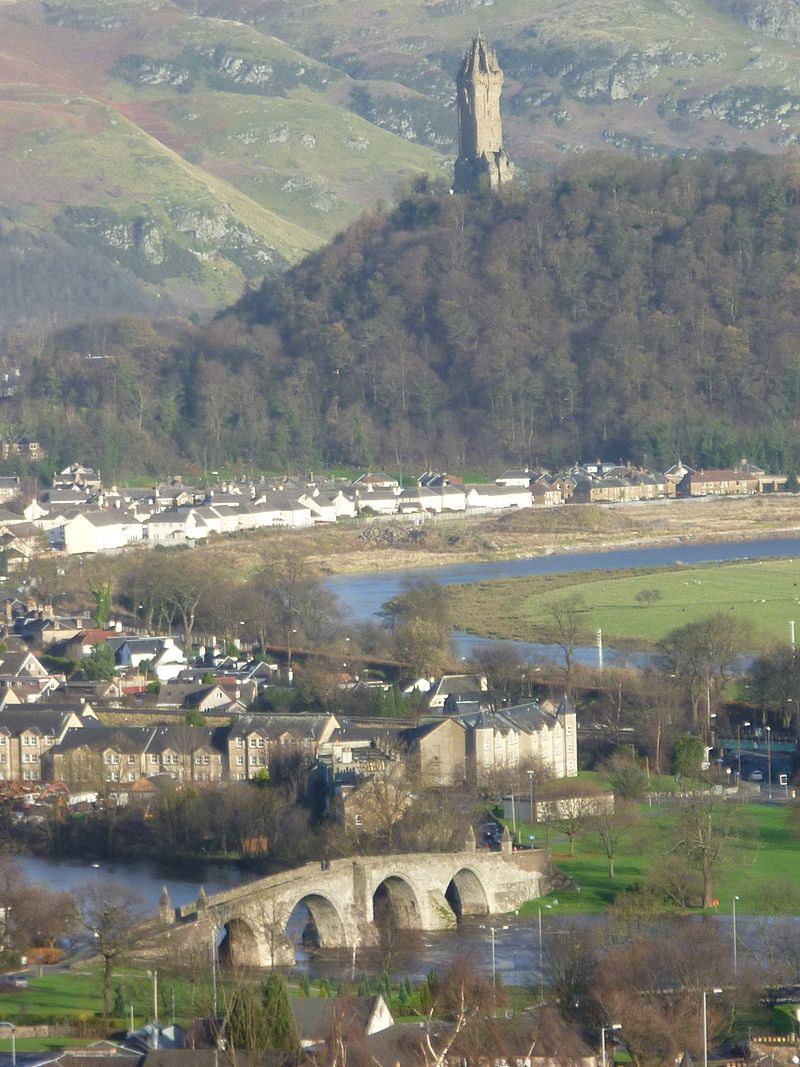
The Battle of Bannockburn

Not far from Stirling Bridge is an even more famous battle site, Bannockburn, where Robert the Bruce routed the forces of Edward II over two days in June, 1314. We arrived at the very modern looking Battle of Bannockburn Visitor’s Centre and Phil led us on a short ramble to a field not far from the famous statue of Robert the Bruce. With Stirling Castle at his back and The Bruce at his front he gave us the story of this greatest Scottish victory. That’s our friend Rob Purdy listening intently. Also note that the notoriously bad Scottish weather has not made an appearance and most of us are in short sleeves and even shorts.
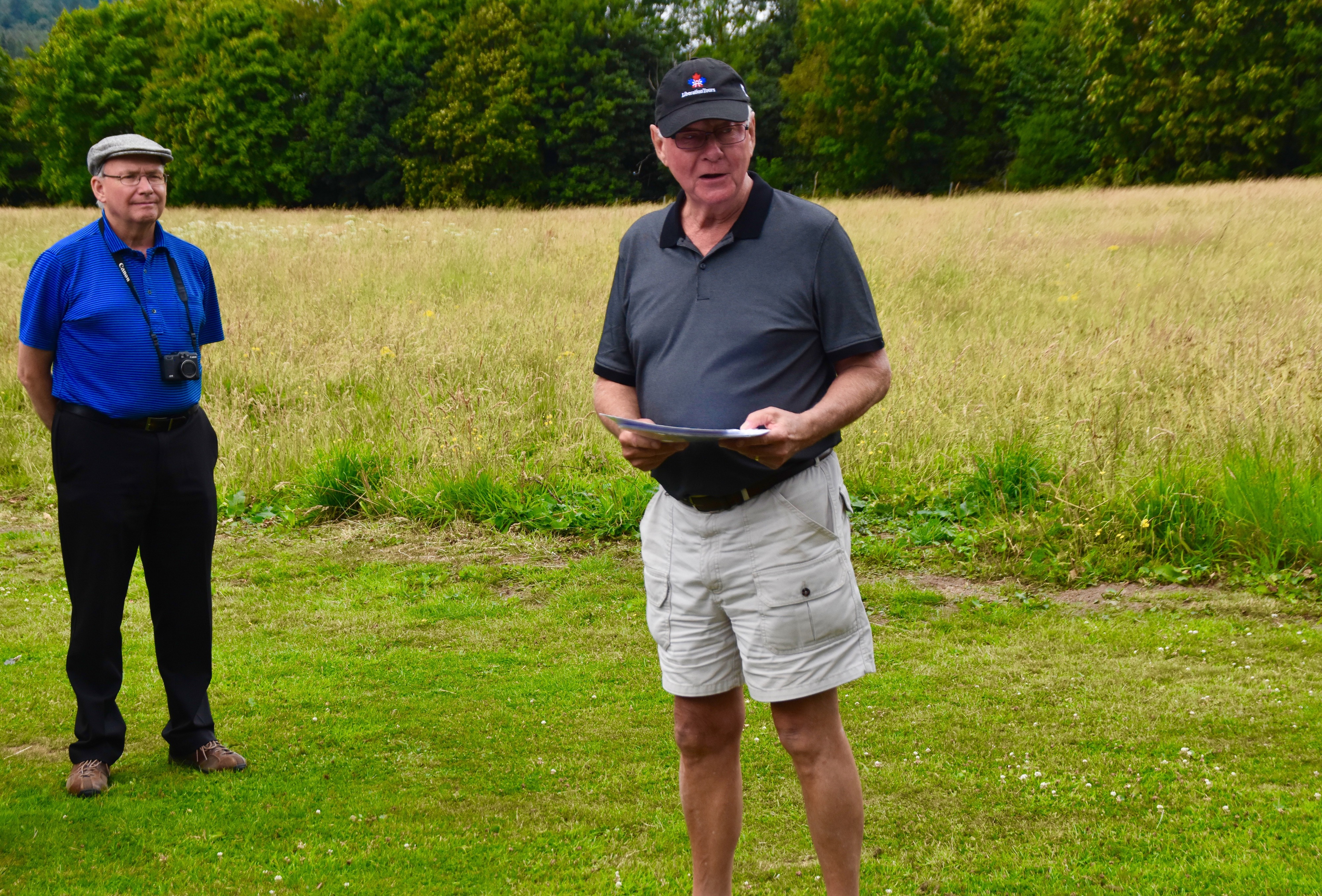
I won’t give a detailed account of the lead up to the Battle of Bannockburn. You can read that here. Suffice it to say that Edward II, who led the English army in person, was a pale imitation of his father Edward I, who was known as ‘The Hammer of the Scots’. Rather than doing the hammering, it was Edward’s army that got hammered at Bannockburn and all that his father had done to bring Scotland under the thumb of England was undone in a few days somewhere near where Phil and the rest of us were standing. As with Stirling Bridge, the exact location of the battlefield at Bannockburn is still not definitively established.
The most famous exploit at Bannockburn occurred on the first day of the battle when English knight Sir Henry de Bohun, clad in a full suit of armour and riding a formidable war horse charged Robert the Bruce who was riding a much smaller horse and armed only with a war axe. The Bruce nimbly avoided de Bohun’s long lance and struck him so hard in the head that it cleaved through his helmet and cut his skull in two. Such are the feats that create legends, but this one’s fairly well documented.
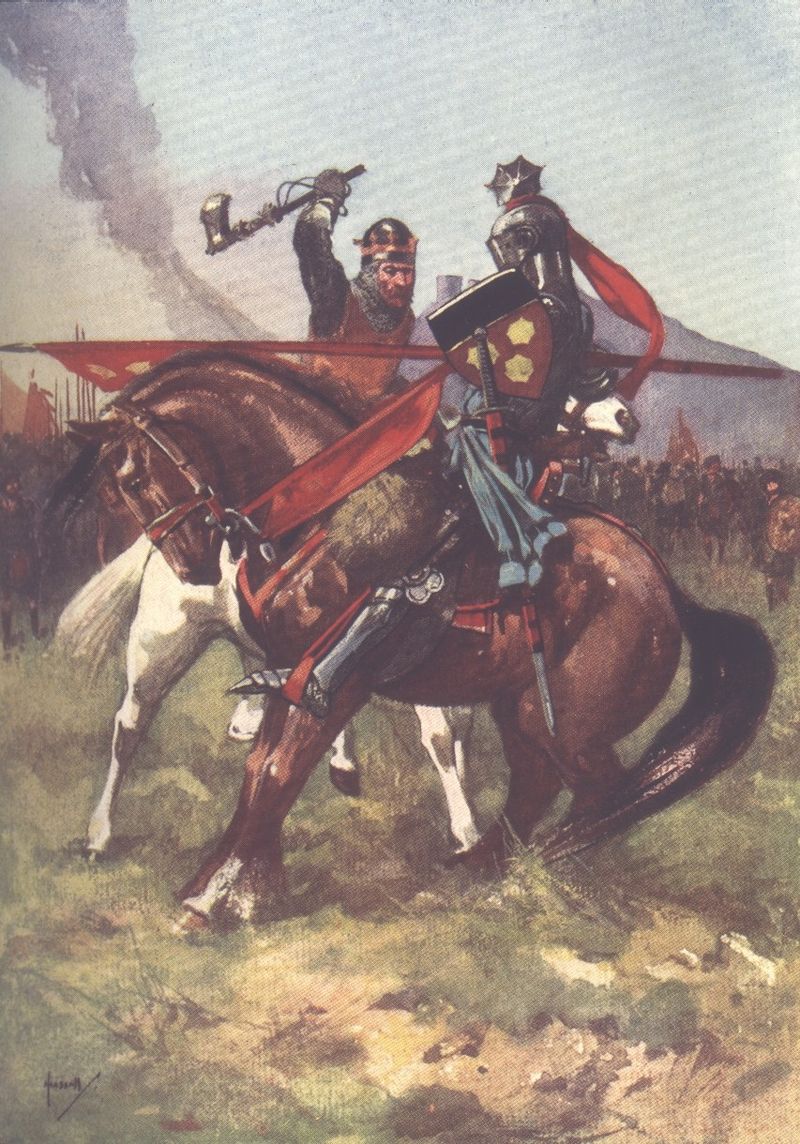
Bruce’s single handed act of daring is credited with boosting Scottish morale while at the same time creating doubt and fear in the English. The next day the English army broke and suffered huge losses with Edward barely escaping the pursuit of the Black Douglas. For the Scots, it was their finest hour.
Interestingly, Robert the Bruce, in one of the great military statues of all time, is not portrayed as he would have looked in taking on de Bohun. but rather in full armour riding a large war horse clad in barding.
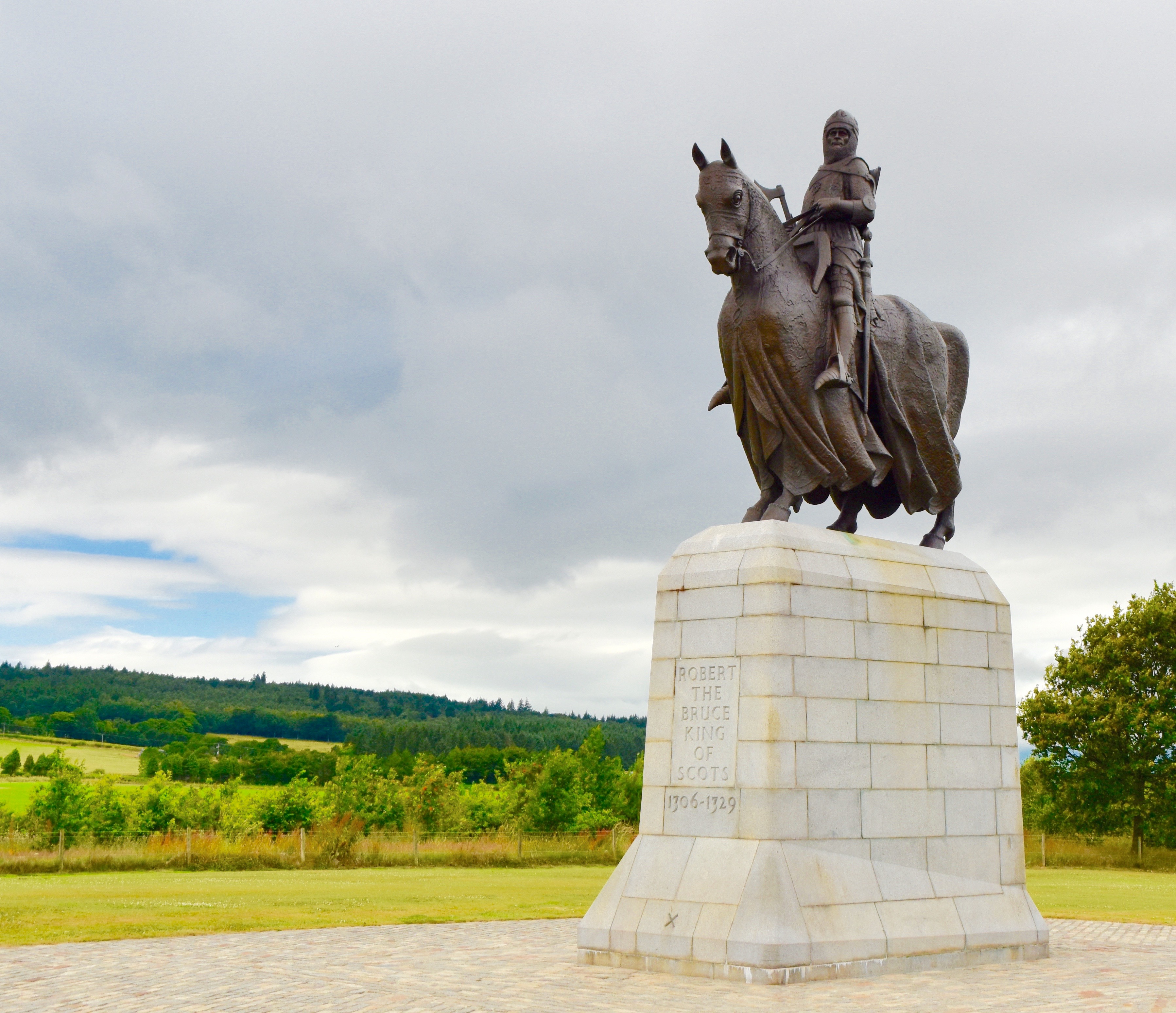
However, the look on his face is surely that of a great leader of men.
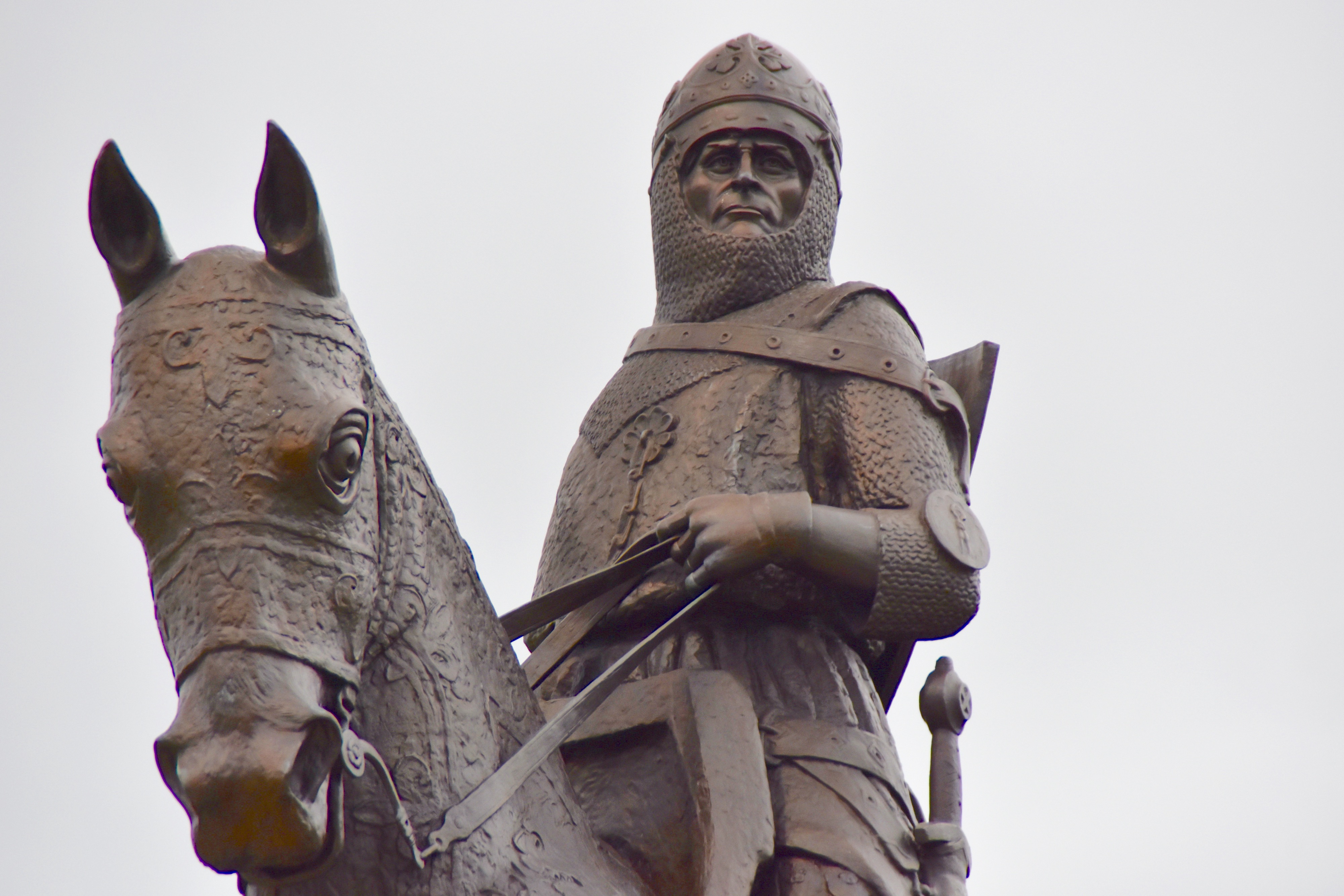
Coming from above the field where Phil was giving his Battle of Bannockburn presentation we heard the skirl of bagpipes for the second time this day and looked up to see a pipe and drum band marching from the Visitor Centre to a circle over which the Scottish flag flies high.
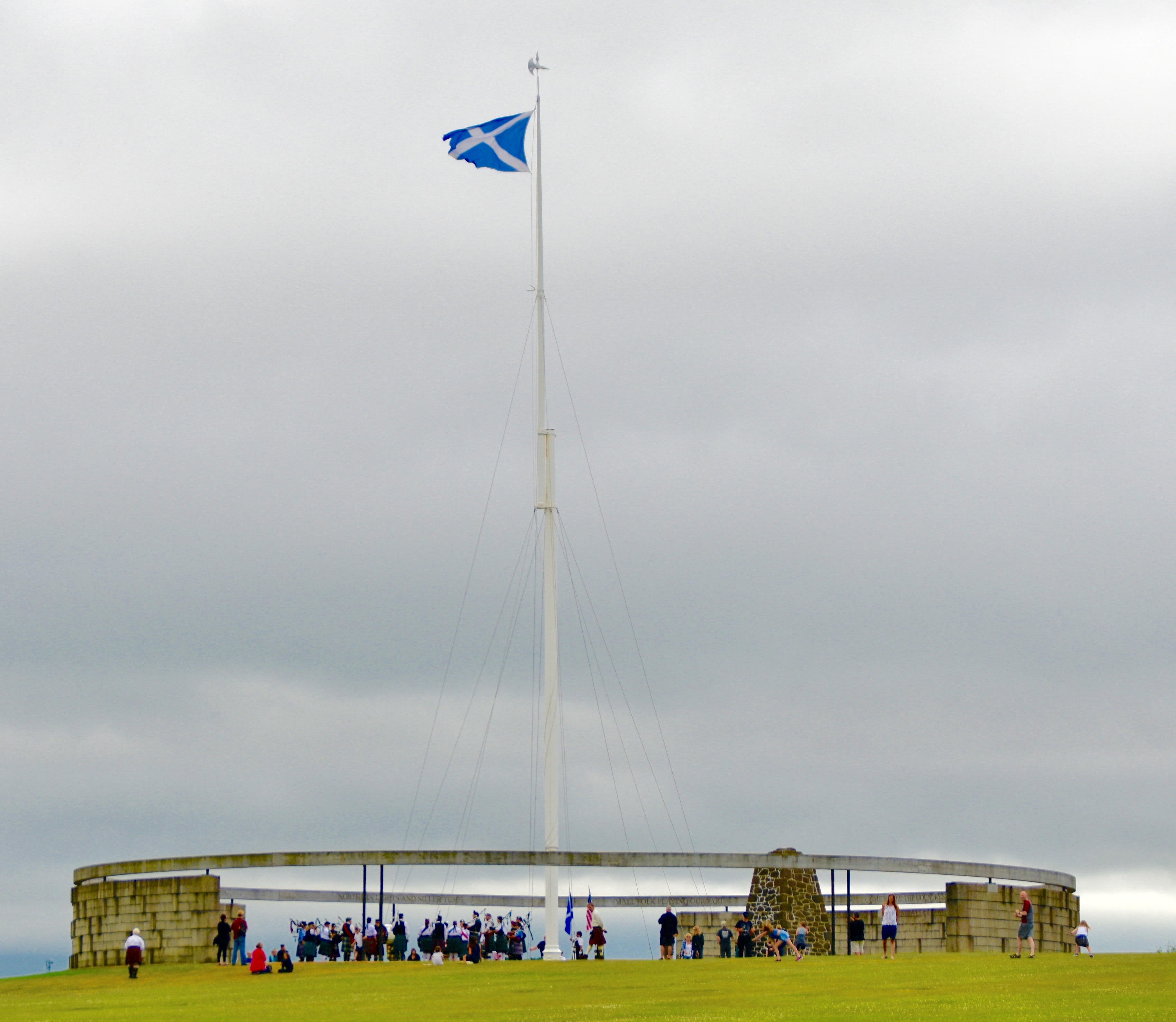
We walked up to join them for a while and then returned to the Visitor Centre where Rob, who can never resist a chance to prepare for battle, appeared in this outfit.
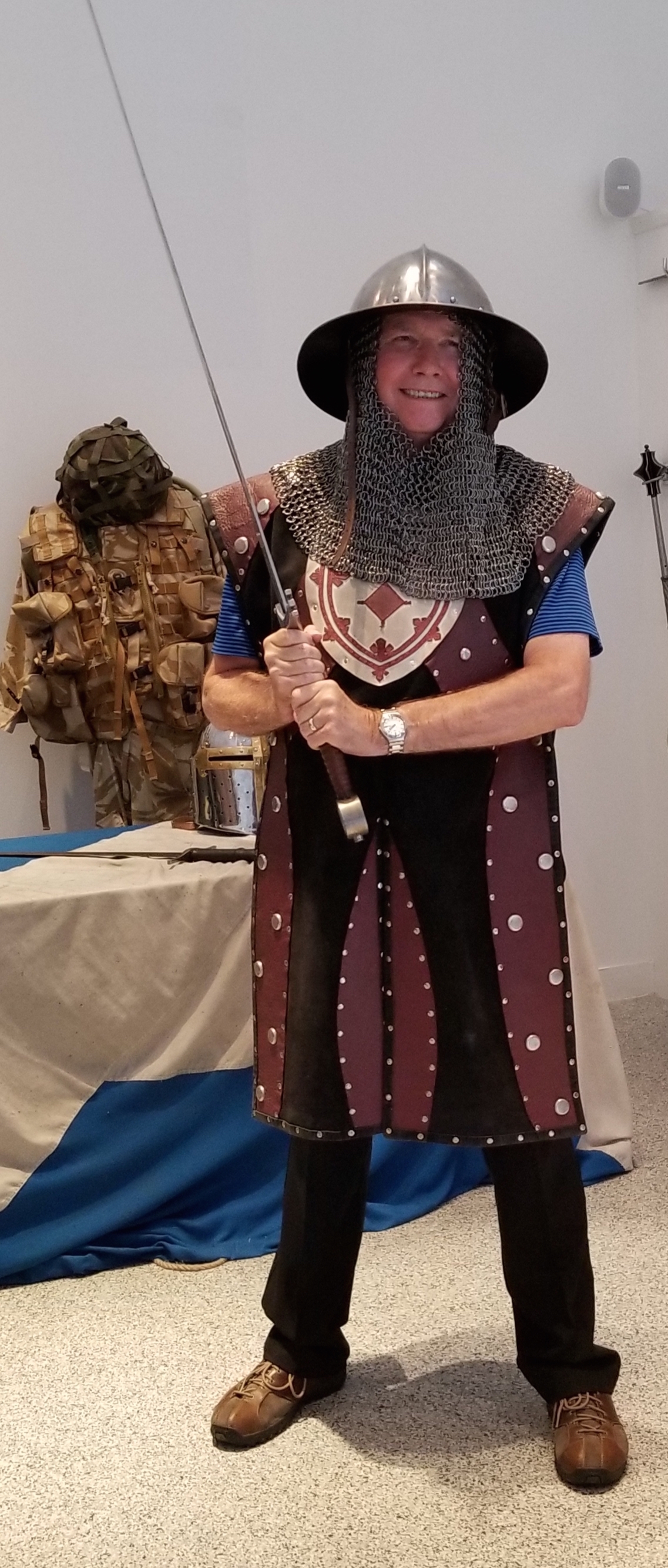
It was with a real feeling of sadness that I boarded the bus for the return to Edinburgh knowing that I would be saying goodbye to this great group of fellow Canadians in only a few hours. But I should have known that Liberation Tours would have a grand finale planned.
Cannonball Restaurant
The itinerary only read – Final Banquet, but that was an understatement. Meeting in the lobby of the hotel on Grassmarket Street at the appointed time, I once again heard bagpipes. This time it was specifically for us, as we were led by a piper down the Miracle Mile as other tourists gaped in astonishment and took pictures of our group doing its best not to look too sheepish.
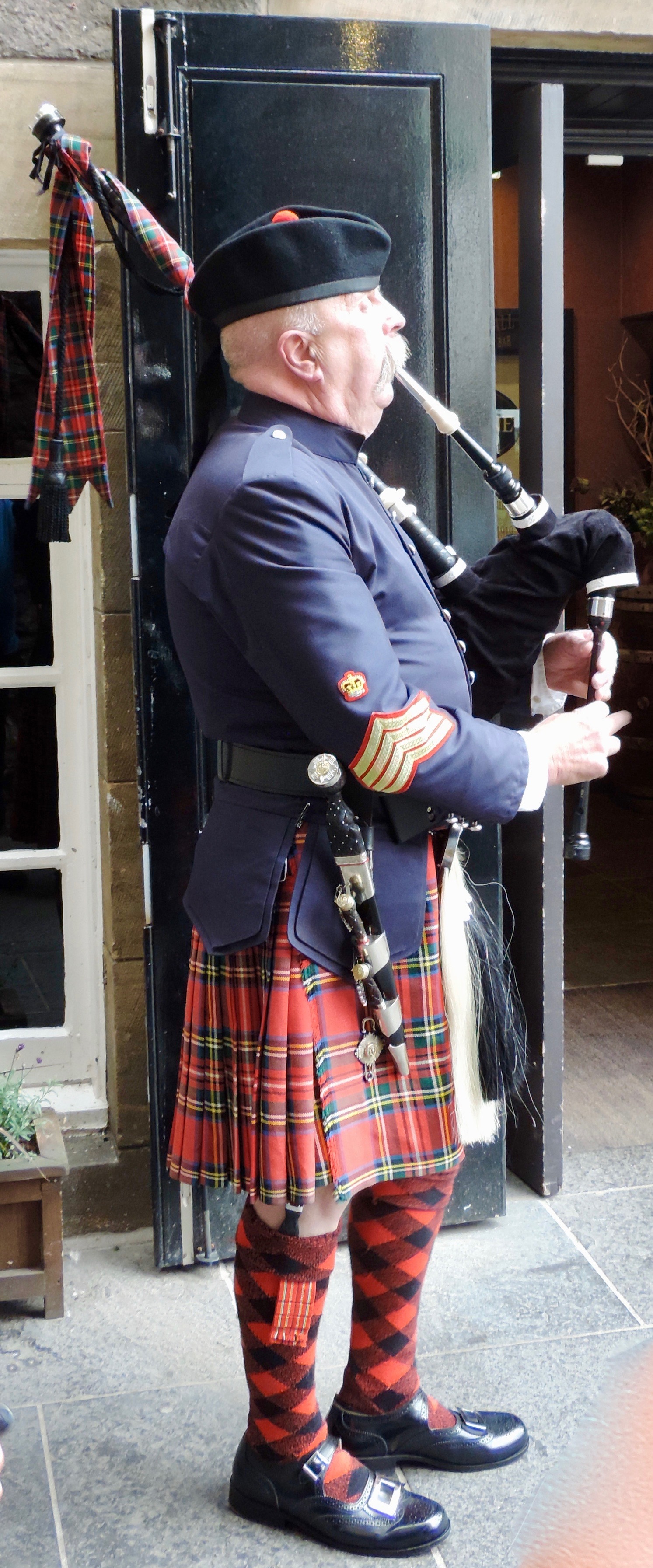
Our destination was the aptly named Cannonball Restaurant where we feasted on a preset menu of Scottish delicacies and shared our memories of a trip that seemed to go by in a flash.
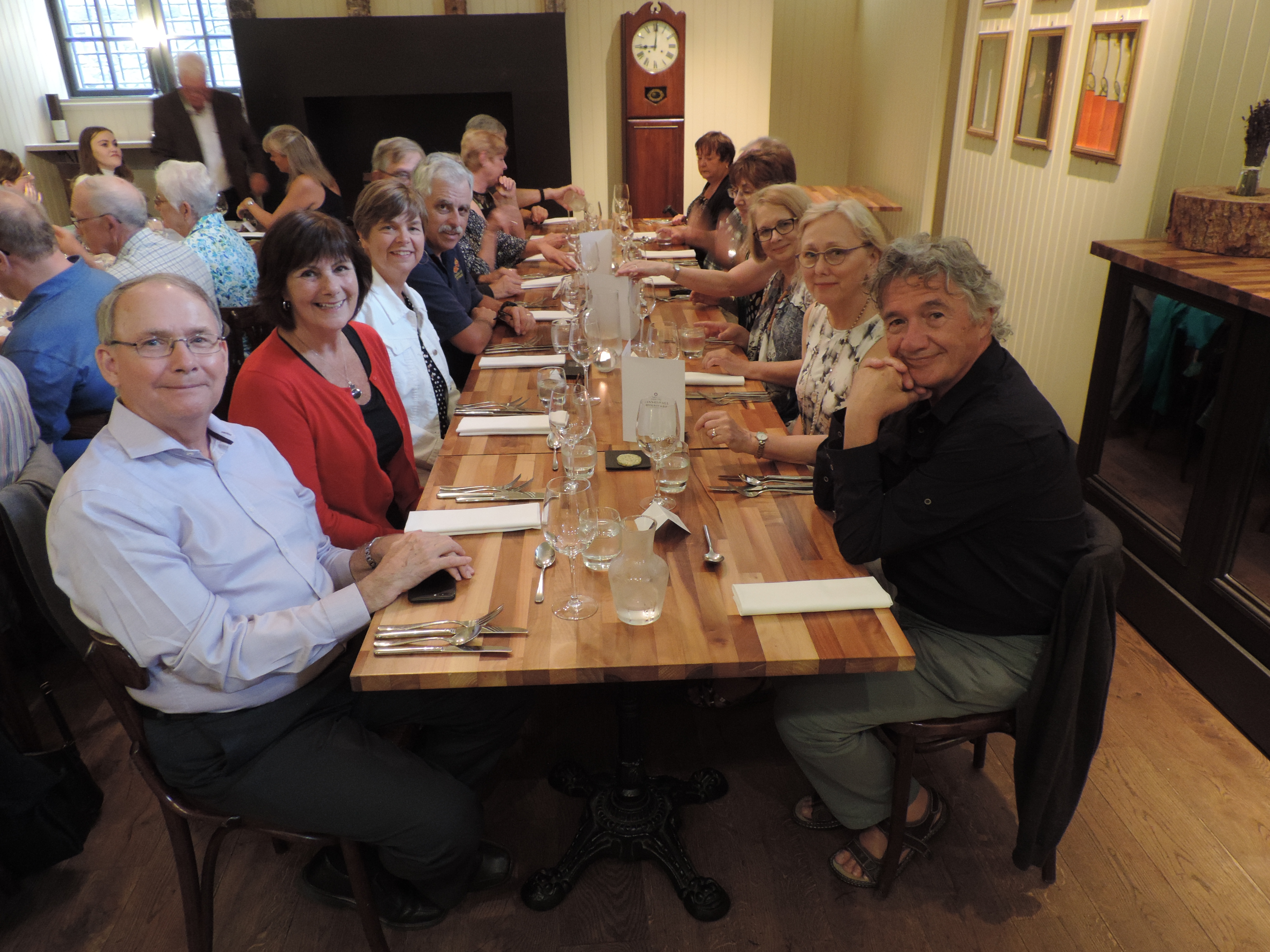
All too soon it was time for a final toast. This is Phil and our inestimable man on the ground for the last three trips, Mark Gascoigne.
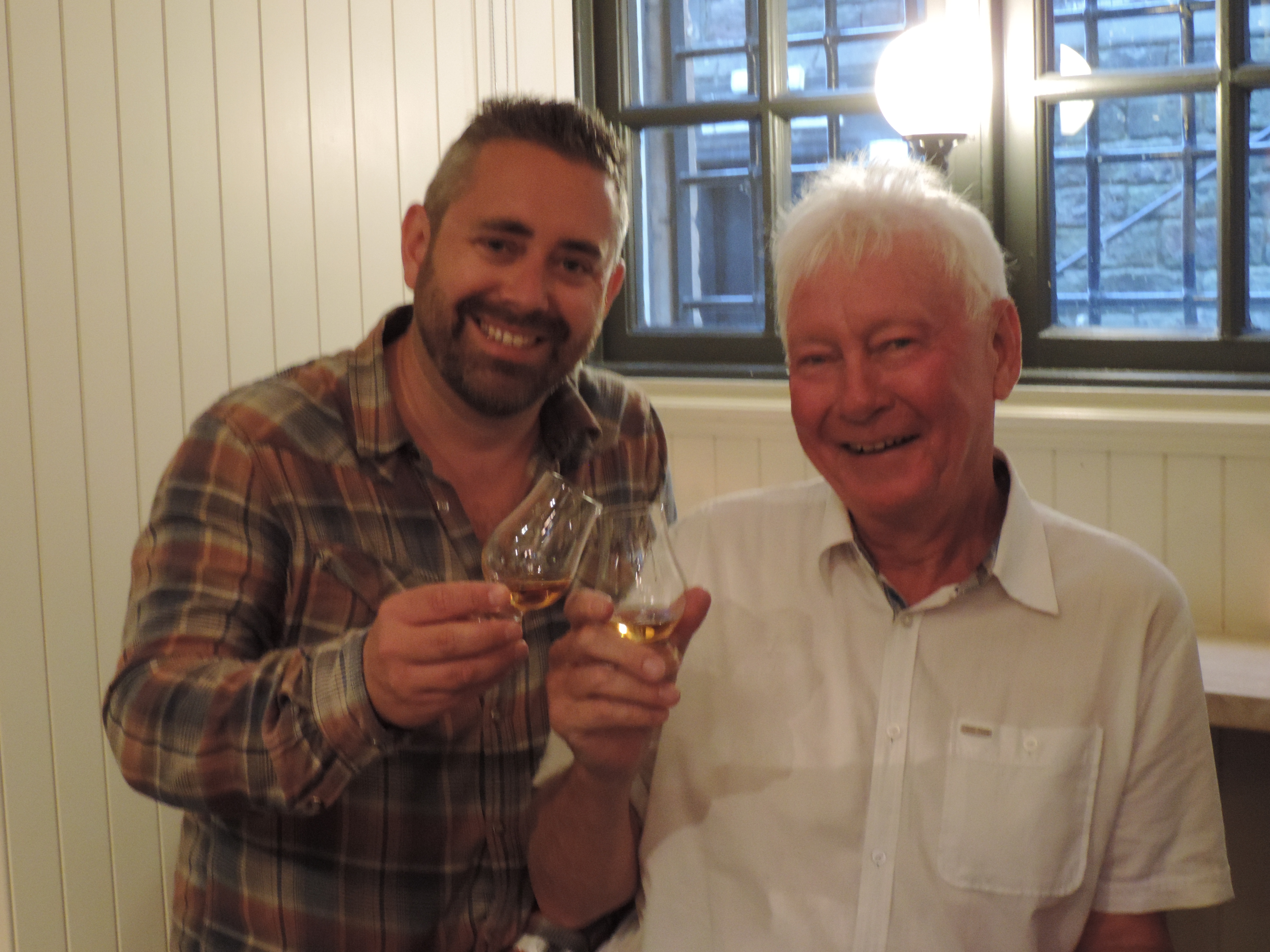
So it’s mar sin leat, until the next adventure with Liberation Tours and that can’t come too soon.
Alison and I, along with Rob and Janet Purdy and my sister Anne will be continuing our Scottish adventure with a trip around the North Coast 500. Hope you can join us.

